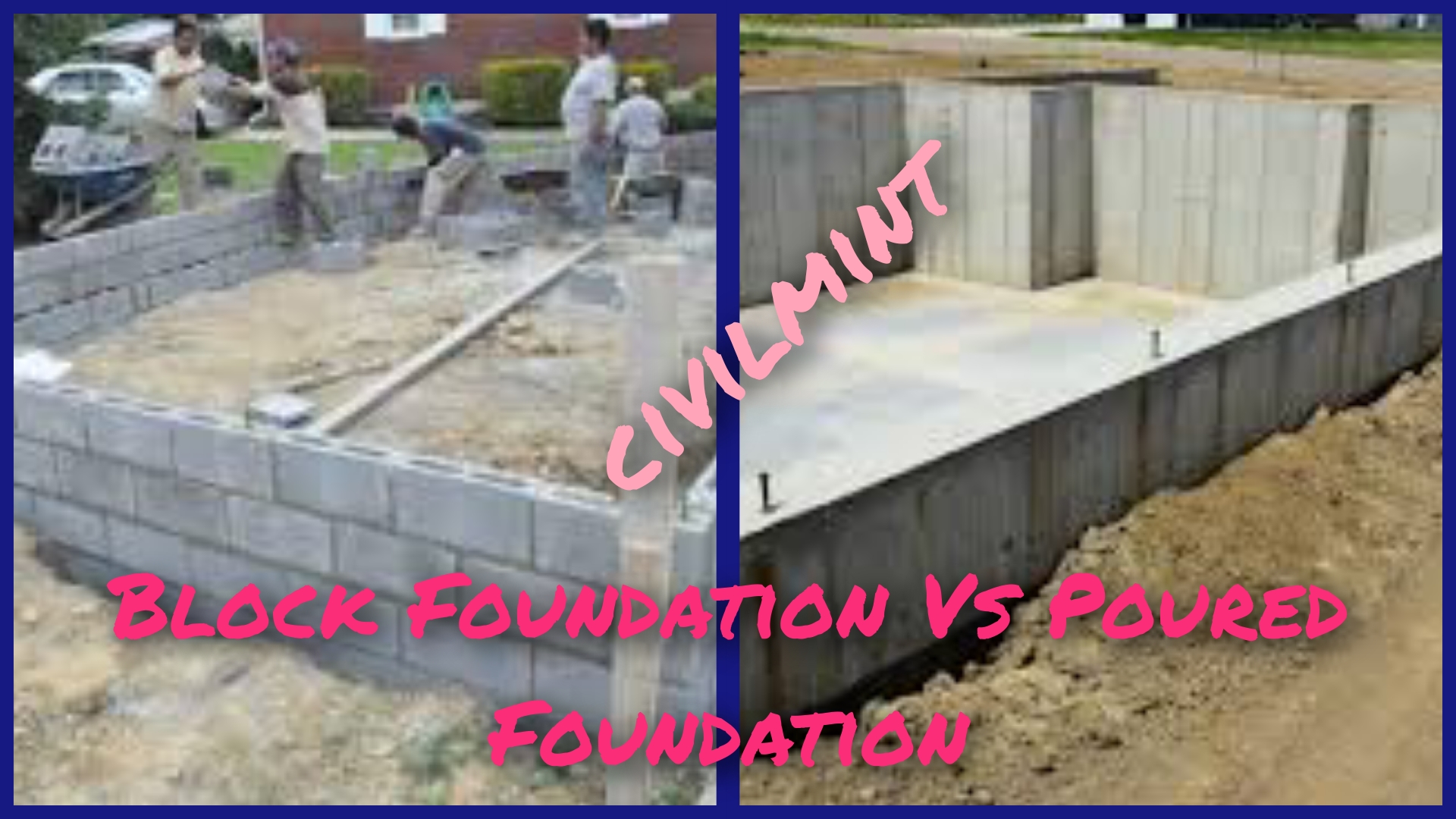- This article explains about Block Foundation vs Poured Foundation.
The main difference between block foundation and poured foundation is that the block foundation is made of concrete blocks whereas the concrete foundation is made by pouring concrete.

Table of Contents
Block Foundation Vs Poured Foundation
Here’s a detailed table comparing block foundation and poured foundation:
| Feature | Block Foundation | Concrete Foundation |
|---|---|---|
| Material | Concrete blocks (e.g. cinder blocks) | Poured concrete |
| Strength | Moderate to high | High |
| Stability | Less stable than concrete foundation | More stable than block foundation |
| Durability | Moderately durable | Highly durable |
| Cost | Less expensive than concrete foundation | More expensive than block foundation |
| Installation | Requires skilled labor for precise laying | Can be poured quickly and with less precision |
| Insulation | Less insulating than concrete foundation | More insulating than block foundation |
| Moisture Resistance | Less resistant to moisture than concrete | More resistant to moisture than block |
| Resale Value | May have a negative impact on resale value | May have a positive impact on resale value |
| Repair and Maintenance | Easier and less expensive to repair | More difficult and costly to repair |
Now we will know about block foundation and poured concrete foundation in detail.
What Is Block Foundation?
Block foundations, also known as Cinder Masonry Units (CMUs), are constructed by stacking cinder blocks one on top of the other.
To build the foundation wall using the CMU method, mortar made of sand, water, and fillers is spread onto the footings to bind the masonry. The process is repeated until the desired height of the foundation wall is achieved.
To reinforce the hollow cinder blocks, vertical steel bars called rebar are inserted. This strengthens the foundation wall, especially for structures that support heavy loads. The rebar is threaded through the cinder blocks, and the gaps around it are filled with concrete.
It is important to note that rebar is not always necessary for smaller structures like parking walls, but for larger structures such as hospital, it is commonly used to ensure stability and durability.
What Is Poured Foundation?
Poured concrete foundations are a widely-used construction method that involves the use of wooden wall forms built on top of foundation footings.
These forms serve as molds, which shape the foundation walls to precise specifications. The wooden walls are then constructed around vertical and horizontal steel rebar supports, which reinforce the structure and increase its load-bearing capacity.
Following the placement of these supports, the next step is to pour concrete mixed on-site into the wall forms. Once the concrete has cured, the wall forms are removed, leaving a solid and permanent structure that serves as a barrier to the surrounding earth.
The benefits of poured concrete foundations are numerous. Firstly, they are highly resilient to water damage and the structural issues that can arise from it. Secondly, they offer a higher degree of strength and durability when compared to other construction methods.
Sum Up
It’s important to note that the choice between a block foundation and a concrete foundation will depend on various factors, such as the type of soil, the climate, the design of the building, and the budget.
Consulting with a structural engineer or a foundation specialist is recommended before making a final decision.
